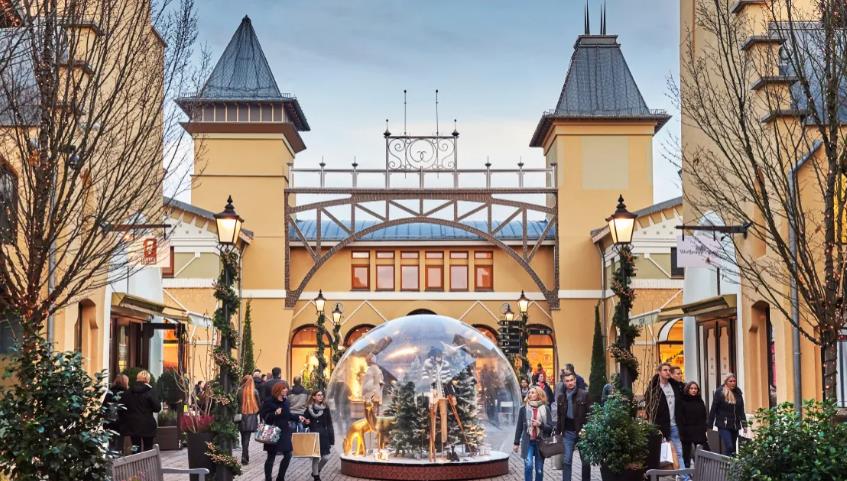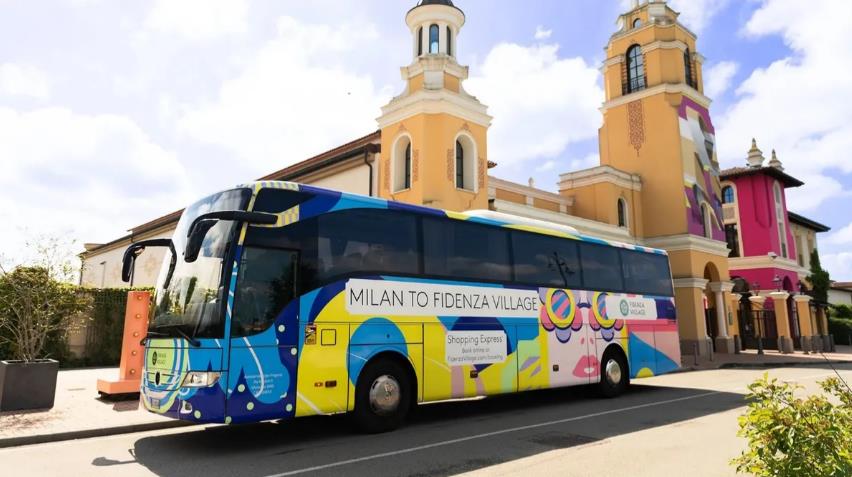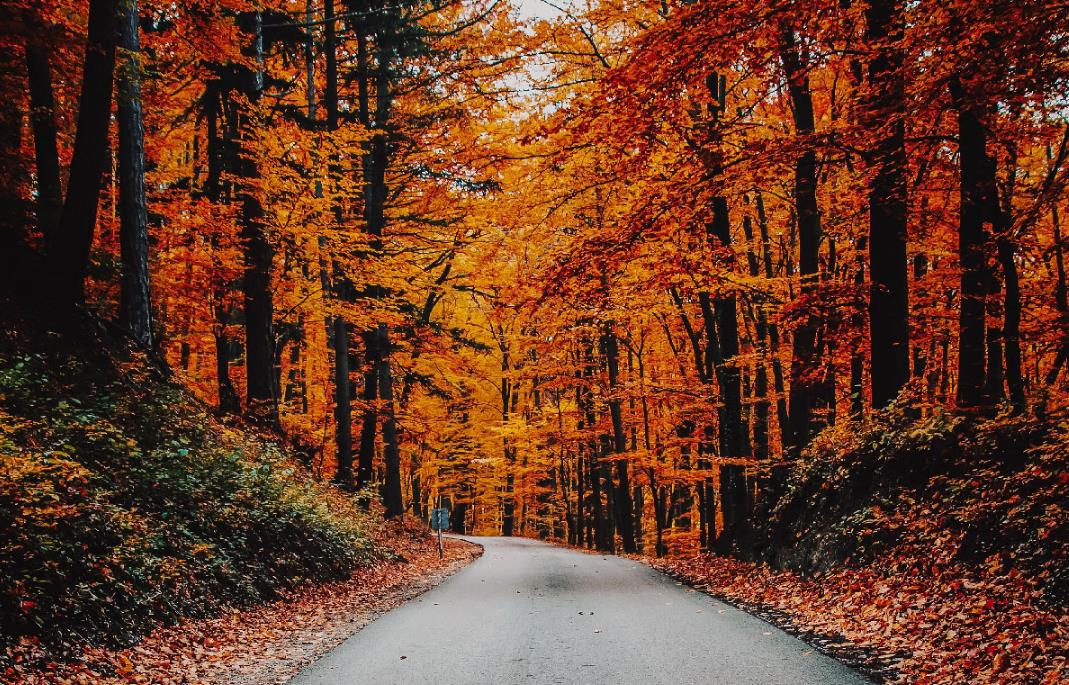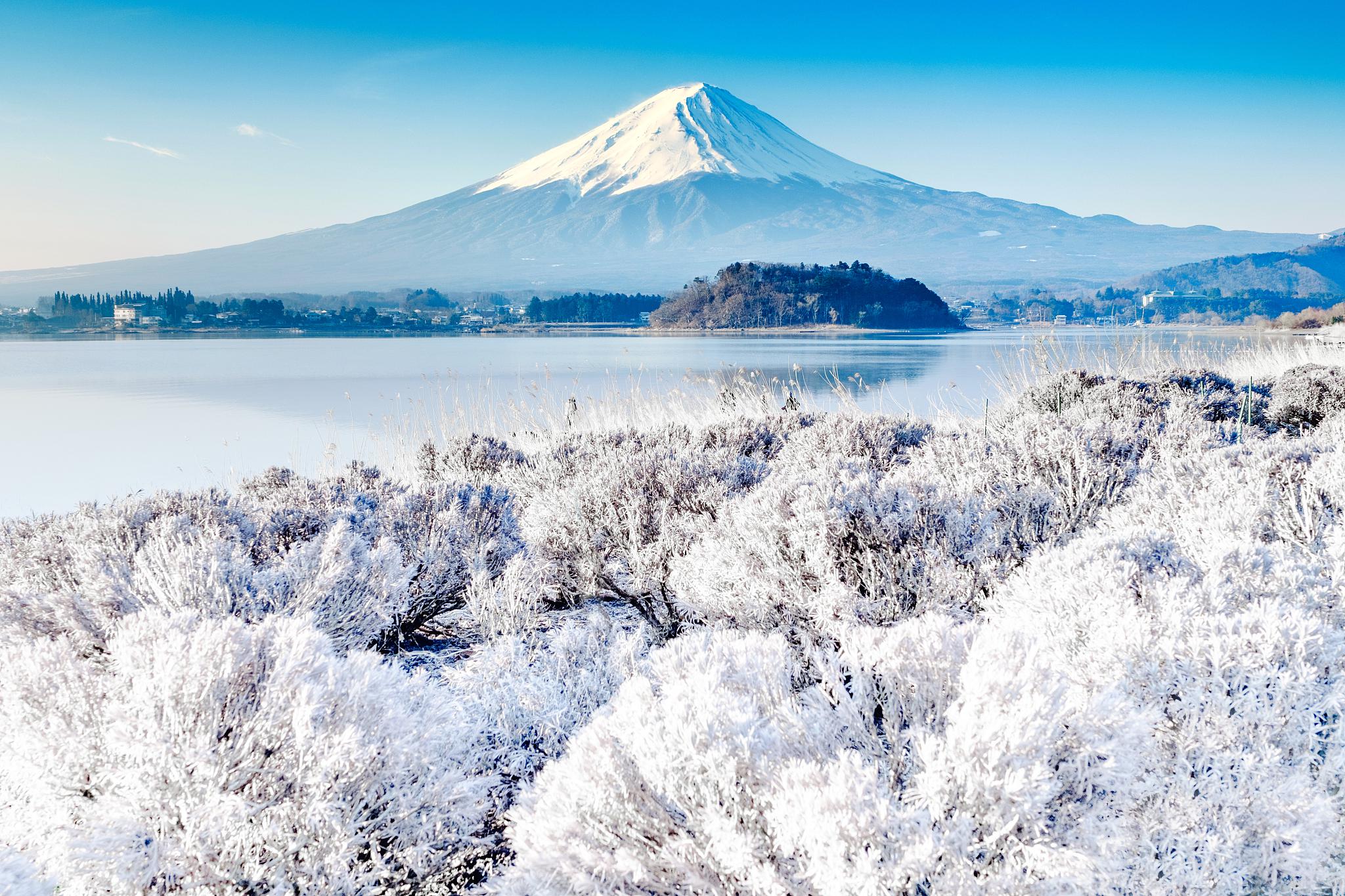https://uk.trip.com/moments/destination-nantan-57070/
2025 Nantan Travel Guide: Must-see attractions, popular food, hotels, transportation routes (updated in April)
Nantan今日天氣
Partly clear 9-18℃
Nantan的熱門Attraction
Kayabuki No Sato
(19)All Moments About Nantan
Depart from Kyoto😛Miyama Gassho Village❤️Classic thatched house😉Fairyland attractions
I have been to Shirakawa-go in Nagoya before 😛 I have always loved ❤️ there I did not expect to have an almost place near Kyoto and much less people!!️ It is Meishan Gassho Village🙈 Miyama Yuki no-ri and Shirakawa-jo Gassho Village in Gifu Prefecture, as well as the Ochi-juku in Fukushima Prefecture, are known as the three largest existing agglomerations of thatched houses in Japan 🫶🏻 There are currently about 50 households building in Mei Shan Hop Chau Village👏🏻 Among them, about 40 thatched houses were selected as the National Important Traditional Buildings Preservation Area in 1993 👍🏻 However, most of them are residential But seriously, Miyama's visibility is really low compared to Shirakawa's Gassho Village 🤔 So here I feel even more isolated from the world 😉 In fact, after you get off the car from the parking lot 🅿️ you can see the huts 🫶🏻 Miyama かやぶきの里 in the distance is not very big attraction If you do not eat then actually 2 hours can be over A little further 🤏🏻 you will be the only shop selling special products in the Miyama area かやの里🤪 You can go shopping before you leave If you want to buy souvenirs, it's a good idea What I recommend to you is Meishan milk and Meishan milk biscuits🍪👍🏻 Their taste is quite mellow🙈 Of course, there is no shortage of other Japanese specialties such as doughnuts 🍡 pickled foods 👏🏻 There are many local maps 🗺️ sightseeing manuals in front of the store so you can get them for free 🆓!! ️ Further on, you will reach the most stunning location in Miyama Town🙈 The thatched houses became the protagonist 👍🏻 taking pictures 📸️ really made it amazing 🥹 We can all pay attention to the roof of the thatched houses ❤️ The cross on it is used to reinforce the Japanese known as Chiki The wooden strips placed on the entire row of cross wooden frames are to ease the snow cutting of snow accumulation in winter It's amazing to be able to build such a house It is only 1.5 hours from Kyoto So if your days here are longer I think it's worth it #Japan Must-See Photo Spots #Parent-Child Places Guide #Weekend Trip #Overseas Trip #foodphotography #Food Guide #Japan Travel #Japan Attractions #Japan Free TripHappy EATERY Life48[Kyoto] Introducing Miyama Kayabuki Village, where you can see beautiful nature and typical Japanese scenery
Miyama Kayabuki-no-Sato, located in the mountains in Miyama-cho, Nantan City, about an hour and a half north of Kyoto City by car, is home to 39 thatched-roof houses, and has been designated as a nationally designated "Important Preservation District for Groups of Traditional Buildings." Shirakawa-go in Gifu Prefecture has a similar style of house, but while the roofs in Shirakawa-go are gassho-style, Miyama's are irimoya-style, making it a rare sight in Japan. In summer, the lush natural scenery and in winter, you can see snow-covered thatched roofs, making it a popular tourist spot, and some people visit on motorcycle tours. 📌Miyama Kayabuki Village 📌601-0712 Miyama-cho Kita, Nantan City, Kyoto Prefecture 📌110 minutes by Keihan Kyoto Kotsu bus from JR Kyoto Station 📌Famous rating: ★★☆☆☆ #Kyoto sightseeing #777 #Kyoto trip #Kyoto trip #Kyoto #Nantan city #Miyama town #Miyama #Kayabuki Village #Thatched roof #Touring trip #Touring旅に出よう10In the summer, Miyama Town and Gassho Village are both comfortable and cool.
- Three years later, I went to Japan to discover new places It's the Matcha Tribe located in Miyama-cho, Nandan, Kyoto ✌🏻 It takes about an hour and a half to drive from Kyoto to Miyama-cho Gassho Village The Gassho Village here is also a small and cute roof. Of course, there are also homestays and you can experience local life🤗 The most important thing is that there are not many people here🤤 You can have a lot of time to slowly appreciate the beauty of Japan有趣既菊上將4[Kyoto Nantan] Glamping facility in Hiyoshi
■DOD CAMP PARK KYOTO Roadside Station Springs Hiyoshi Hiyoshi Station Rurikei Onsen Kyoto Today, I visited the glamping facility "DOD CAMP PARK KYOTO" in Springs Hiyoshi, located in the Hiyoshi area of Kyoto, with my wife and dogs★ The Hiyoshi area is home to the famous Hiyoshi Dam and Rurikei, and is full of nature, even in Kyoto, so you can relax♪ This is a glamping facility in collaboration with camping goods company DOD, and all the tents and camping equipment are from DOD🤣 Campers can't get enough of this♪ The location is excellent, and the tents are spacious and very comfortable👑✨ Glamping, dinner, and breakfast are included for 9,000 yen per person, which is very reasonable♪ For dinner, we had 🎈Stick salad, 🎈 BBQ set, 🎈Caponata pasta kit with local vegetables 🎈Rice cooked in a pot with Hiyoshi-grown rice 🎈Scallops grilled with herb butter and squid wrapped in foil And it was a super luxurious dinner★ Breakfast was also 🎈Teriyaki chicken and thick egg with cheese hot sandwich 🎈Fresh vegetable salad from local farmers Homemade onion dressing 🎈Mushroom soup And the morning was also too luxurious🤣 Relaxing while eating delicious food surrounded by nature♪ It was a blissful refreshing time🙋♂️ Rurikei Onsen #SpringsHiyoshi #Hiyoshi #KyotoTourism【旅とグルメ】Shanghai Lily3[Kyoto Nantan] Lake beside Hiyoshi Dam
■Ama-Waka Lake Kyoto Hiyoshi Ruri Valley Hiyoshi Dam Today, I visited one of the many tourist spots I visited while glamping in the Hiyoshi area, "Ama-Waka Lake" 🙋♂️✨ This is a lake facing Hiyoshi Dam, and it's a relaxing spot where you can feel the grandeur of the wide lake along with the spectacular view of Hiyoshi Dam 🙋♂️ The square is open and perfect for a walk 😊 #Hiyoshi #SpringsHiyoshi【旅とグルメ】Shanghai Lily5Miyama Town
The unique Gassho Village❤️ The Thatched House Village in Miyama-cho presents the authentic Japanese village style that has been preserved since the Edo period. Like the Gassho Village in Shirakawa-go, it gives the illusion of traveling through time and space. The houses here are cute and small, with thatched eaves that give them a retro feel against the misty mountain foot. In the winter, Miyama Town is covered in white snow, dotted with bright yellow lights. The warmth amidst the bleakness is the most beautiful scenery in winter. Taking a stroll in Miyama's thatched cottage village will be the most incredible experience you will have in Japan. The editor recommends that if you come to Miyama, you must stay here for a few days. In addition to the absence of the commercial atmosphere of Shirakawa-go, you can experience local Japanese life. The Japanese-made houses and furnishings will give you a travel experience that is more Japanese than Japan. You can even enjoy breakfast with local Japanese people.經典茶飲6Miyama Town, Kyoto
The thatched roofs of Miyama Town are reminiscent of the authentic Japanese village atmosphere of the Edo period, and the room has the illusion of transcending time and space, like the Shirakawa-go Gassho Village. The small and cute grass-covered roof exudes an old-fashioned feel at the foot of the clouds, and in winter Miyama Town is lit up with white snow and the yellow lights. The warmth of winter is the most beautiful scenery of winter. #Historic sites that give you a sense of historykっっっっ5Miyama Gassho Village (Kyoto Prefecture)
Different from Gassho Village in Shirakawa-go, Miyama Gassho Village in Kyoto Prefecture is a mini paradise but far away from the crowds. Miyama Gassho Village is located in a valley of more than 800 meters, about 1.5 hours from Kyoto and 2 hours from Osaka. After arriving in Miyama Town, I immediately felt that the air was fresh and the village had a unique Japanese rural simplicity. There are about 50 buildings in the entire village, including nearly 40 thatched houses. Different from the commercial feel of Shirakawa Township, the complete Japanese scenery is preserved here, and the entire trip can be completed in about one hour. Travelers who like to walk in the countryside may wish to take a walk here to experience a different feeling. #美川 #Gasho VillageMarco198135Miyama Town looks like a Gassho Village
Miyama-cho is located in the middle of Kyoto Prefecture, about 1.5hrs drive from Kyoto city. There are about 50 households built in the village, including a total of 38 thatched houses. The most signature landmark is the little red mailbox. 🛖📮 #OverseasTravel #JapanTravel #Countryside #Kyoto #Scenery #Japan AttractionsJoeBa4A village surrounded by mountains in northern Kyoto
●Name Miyama Kayabuki-no-Sato ●Access 110 minutes by Keihan Kyoto Kotsu bus from JR Kyoto Station ●Points It's a bit far from Kyoto Station, so it's hard to visit, but it's an area where you can enjoy the quiet nature. Kayabuki-no-Sato, lined with thatched-roof houses, is a photogenic tourist spot. There are also shopping spots for ice cream and manju, and you can enjoy the scenery that changes with the seasons. I'd like to go there in the snowy winter season. #Kyoto #gw2022jpMolly3588Trip to Kyoto! Visit Kayabuki Village and Miyama Town!
I visited Kyoto's Kayabuki Village, Miyama Town. It's a wonderful place with a traditional Japanese landscape. It's not often that you sit around a hearth and eat a meal, is it? The water of the Yura River that flows nearby is so clear and relaxing. #family #familytrip #familyfriendly #familymemories #Kyoto #Kyototrip #northernKyoto #MiyamaTown #KayabukiVillage #YuraRiver #Yassantv1977 #naturalscenery #Japanesetownscape #Japanesescenery #Japaneselandscape #Japanesebeauty #photographyguidefortourists#immediatelyusablephotographytechniques#themostbeautifulprivatelodge#amazingnature#tourismsupport#spectacularviews#triptoenjoyspring#tripwithkidsやっさんTV1977 YouTuber11Longyan
Longyan Temple Longwen Temple is a rare tourist attraction in the vicinity of Kyoto. At first sight, the sight of the maple leaf is immediately smothered, where the red and golden maple leaves intersect to create Beautiful and layered maple leaves, there are no tourists to disturb, only a few chasing maples. 2018.11.20 Ryuonji Temple Kyoto City Nandan City, Kawabe-cho, Renjiang Kegou 1 (Komizobata-1Sonobecho NieTobeJIN.4Kayabuki no Sato Country Village
Kayabuki no Sato Country Village Located in Miyama City, 30 km from Kyoto City. Kayabuki no Sato is a village with traditional houses. Each house has a high roof, which is considered one of the characteristics of this village. Although it is hundreds of years old, it is well maintained by the villagers. In addition to visitors being amazed by the beauty of these strange houses, the beauty of the scenery is also amazing. When you come here, you will feel full of the beauty and tranquility of this village. In addition, you will also get a good experience of authentic Japaneseness. #japan #traveljapan #travelosakaSu Backpacker1[Kyoto] Ruri Valley Glamping
💞Reasons why we recommend it: There are few bugs, there is a hot spring nearby, and we can choose our own ingredients! The air conditioning was good and we had a comfortable stay! Check-in → Pick up dinner equipment and ingredients *Dinner equipment and ingredients can be picked up until 17:30* →Dinner and cleaning up Return dinner equipment and pick up breakfast equipment *Dinner equipment and breakfast equipment can be returned until 21:30* →Bathing (Rurikei Onsen Main Building) *Reception 07:00-24:00 (last entry 23:30)* ☀️-8:30 Pick up breakfast ingredients *Weekends and holidays 7:00-8:30 ► 10:00 Breakfast and cleaning up 10:00 Check-out #Spring 0 yen trip #Kyoto trip #Kyoto glamping #Rurikei glamping #Domestic travelぞえA small, c
A small, cute village in the middle of a valley. There are real people living there. It should be beautiful in winter because it is covered in snow. When you visit the village, don't miss out on trying the milk and milk flavored ice cream that only Miyama has.sindysirinWhere to stay in Hiyoshi Forest Resort Yamanoie
If you rent a car and want to be next to nature . Here is good place for you. Family ryokan forest hotel with bbq indoor. Very nice. It’s located in Tokyo but up to the north in the forest. Prepared well for a long drive. ✨Hotel Highlights: forest with onsen public bath separate men/women ♨️Amenities: public bath, towels, pyjamas, bath amenities, 🛁Room Environment: very large and nice ryokan 🍽️Breakfast: we didn’t have breakfast 🛎️Hotel Service: bbq service , camping 💗Guest Experience: very good experience we found deers on the road too. Long drive but worth it! #travel #couplestrip #onsen #onsenjp #campingVxxlttxHassle-Free Camping in Kyoto 🏕️
Ever wanted to go camping while traveling but dreaded all the prep work—buying gear, packing, setting up, cleaning? At DOD Camp Park, you can skip all that and just show up for a stress-free outdoor adventure! For around £45-70/¥9000-14000 per person, you can enjoy a camping experience with meals included! This also included unlimited hot spring access! There are plenty of tents options to choose from their website: • 3S: Cozy 2-room tunnel tent (1-2 people) • 3M: Spacious 2-room tunnel tent (2-4 people) • 3L: A larger version of 3M (1.5x bigger) (2-4 people) • Tipi Tent: Classic large single-pole tent with two rooms (2-4 people) • Camp House: Cute A-frame cabin with air conditioning For set meals, they offer 2 choices as well: • Standard: Grilled meat, veggies, pot-cooked rice, and hotpot • Premium: Everything from Standard + A5 Wagyu beef, whole scallops, cheese fondue, etc. (menu changes by season) They’ve also just opened Japan’s largest indoor play arena, and entry is only ¥500 on weekdays / ¥700 on weekends—super worth it! The whole experience is effortless and comfortable. There’s even a detailed timetable to guide you through, showcasing Japan’s signature attention to detail. The tents come with power outlets and heating/cooling fans, so you’re set no matter the weather. From grilling BBQ, cooking hotpot, and making rice, the night was packed, but seeing our parents have so much fun made it all worth it! Would you try camping like this? 😆 #japan #thingstodoLap.x.sap1Kyoto | The independent Miyama Town, Kyoto Kogassho Village, Kayabuki Village
The three major Gassho villages in Japan are Ouchijuku, Shirakawa-go, and Miyama-cho. There are about 50 households in the settlement, 38 of which live in traditional thatched houses. It is smaller than Shirakawa-go and transportation is not very convenient. Miyama Town is located in Nantan City, northwest of Kyoto. Residents began to settle there more than 200 years ago. It takes about an hour and a half to drive from Kyoto or Amanohashidate. If you take public transportation, take the JR to Hiyoshi and then transfer to the Nantan city bus, which will arrive in about an hour. Since the intervals between buses are long, it is recommended to check the return schedule in advance to avoid waiting too long. The most famous attraction in Kayabukinosato is this red mailbox. The bright color contrasts with the quaint thatched house, and it is also the place where most tourists stop to take pictures. What is more special is that in addition to the crisscrossing chigi on the roof, there is also a long wooden strip called yukirari, which is the wisdom of the ancients to protect the roof from heavy snow in winter. Miyama’s milk is quite famous and can be bought in supermarkets in Kyoto, but when you go to Miyama-cho, you might as well try the ice cream made from Miyama milk. Finally, what moved me the most was the doll in the bus stop. Because I didn’t check the return time that day, I had to wait for a long time. When I was strolling around and saw the doll in the bus stop, I knew that I still had someone to accompany me, and I smiled knowingly. 📍Address: 〒601-0712 Miyama-cho North, Nantan City, Kyoto Prefecture #JanuaryGoodPlaces2025旅行中的野馬1🏡 Kyoto G
🏡 Kyoto Gassho Village - Miyama Thatched Village ~~ The last check-in point, completing today's itinerary! 🏡 🌾 "Miyama Kayabukinosato" is known as one of the "three major thatched house settlements in Japan" along with Shirakawa-go and Ouchi-juku. Among the 50 buildings in the village, 40 are thatched houses. In 1993, the village was selected as an important national preservation area for traditional buildings. This place is even more fairy-like than Shirakawa-go. In the quiet village, thatched houses are neatly arranged, as if traveling back to the Edo period. People in the world call it "paradise on earth"! 📮 The most beautiful photo location - the little red mailbox 📸 Take a picture of the thatched house from the front and the layers of roofs stacked up behind it, the picture is beautiful! The bright red mailbox at the entrance is the symbol of Meishan, remember to check it out! Family members 👀 Don’t forget to observe the “Thousand Woods” and “Snow Cuts” on the roof. This is the wisdom of the ancients. They can easily deal with the snow. I really admire them!tw.thomas.linMiyama no
Miyama no Sato lights up. It's a pity that it didn't snow. It would be really beautiful if it snowed. I hope I can see it next time.阿阿晶The itinerary of Miyama Village, Kyoto 🇯🇵
#favouriteitinerary Miyama Village in Kyoto is a peaceful, rural destination known for its beautiful landscapes, traditional thatched-roof houses (kayabuki no sato), and rich culture. Here’s a suggested itinerary for a day or two to help you experience the best of Miyama Village: Morning: 1. Arrival in Miyama Village • Start your day by arriving in Miyama. If you’re coming from Kyoto City, it takes about 1.5 to 2 hours by bus or car. 2. Visit Kayabuki no Sato (Traditional Thatched-Roof Village) • This iconic village, with its preserved thatched-roof houses, is a must-see. It’s a great place to wander, take photos, and experience the old rural life. • Some of the houses are still occupied by locals, and there are small shops where you can buy handmade souvenirs like pottery and locally produced items. Lunch: 3. Lunch at a Local Farmhouse or Restaurant • Enjoy a traditional Kyoto-style lunch. Some places offer meals made with fresh, locally grown ingredients, including vegetables and meats from the area. • Miyama Soba (buckwheat noodles) is a regional specialty, and you can find it at many local restaurants. Afternoon: 4. Explore the Scenic Countryside • Take a walk or bike ride through the surrounding fields, rice paddies, and forests. There are scenic paths that will lead you to breathtaking views of mountains and rural life. 5. Visit the Miyama Folk Museum • Located in the village, this small museum offers insight into the history, culture, and customs of the region. It’s an interesting stop to learn about the farming tools, folk art, and traditions of Miyama. #kyoto #japan #villageKabutskyAll About Miyama Village, Kyoto 🇯🇵
#newyearnewtrip Miyama Village is a scenic and historically rich area located in the northern part of Kyoto Prefecture, Japan. It’s particularly known for its preserved traditional thatched-roof houses, which give it a very distinct, old-world atmosphere. Here’s a deeper dive into what makes Miyama Village special: 1. Location & Accessibility Miyama Village lies in the mountainous region of northern Kyoto, about 40 kilometers north of Kyoto city. While it is somewhat remote, it’s accessible by car or bus, making it a perfect day trip for those seeking an escape from the bustling city life. The village sits amidst lush forests, rivers, and rolling hills, offering a beautiful backdrop for exploring. 2. The Traditional Thatched-Roof Houses (Kayabuki no Sato) One of the main attractions of Miyama is its Kayabuki no Sato, or “thatched-roof village.” The traditional thatched-roof houses, some of which are more than 100 years old, are a rare sight in modern Japan. These houses are not just picturesque—they are practical, designed to keep homes warm in winter and cool in summer. Many of the houses are still inhabited, giving visitors a chance to see local life as it was centuries ago. 3. Rural Culture & Way of Life Miyama Village offers a glimpse into rural life in Japan. The area is not heavily commercialized, and visitors can experience an authentic, quiet way of life. The villagers practice traditional farming and craftwork, with an emphasis on sustainability. Miyama’s residents often engage in activities like weaving and making rice cakes, offering workshops for those interested in learning these crafts. 4. Miyama’s Natural Beauty The surrounding natural landscape is a huge draw. The village is surrounded by lush mountains, forests, and the Yura River, making it an ideal location for hiking, cycling, and exploring the outdoors. The Miyama Nature Center offers various programs, including nature walks and educational exhibits, helping visitors connect with the environment. 5. Historical Significance Miyama has a long history, dating back over 1,000 years. It was historically a center for agriculture, and the preserved houses give a sense of what rural Japan was like centuries ago. The area also has many shrines and temples, each with its own historical and spiritual significance. 6. Local Cuisine Miyama’s cuisine reflects its rural roots, with local specialties such as miso-based dishes, fresh river fish, and wild boar meat. You can also find unique rice-based products, like rice cakes and mochi, often made using traditional methods. 7. Miyama's Role in Preserving Culture Efforts to preserve the village’s traditional ways of life are significant. Many of the thatched-roof houses have been carefully maintained by local residents, and there are programs to teach the younger generation the skills. #kyoto #japan #villageKabutskyKamakura Shrine Miyama Village, Kyoto 🇯🇵
#newyearnewtrip Kamakura Shrine in the Miyama area. While there isn’t a shrine by that exact name in the Miyama region, you might be referring to Miyama Kamakura Shrine, a small but picturesque shrine in the Miyama village of Kyoto Prefecture. Miyama is known for its traditional thatched-roof houses and serene rural atmosphere, and the Kamakura Shrine in this area adds to the peaceful charm of the village. Here’s a general idea of what visitors can expect from this location: Miyama Kamakura Shrine Overview: • Atmosphere: The shrine is surrounded by natural beauty, with lush forests and a quiet, tranquil environment. It’s less crowded compared to more famous shrines in Japan, so you can enjoy a more intimate experience with nature and history. • Architecture: As with many rural shrines in Japan, the structure of the shrine is simple but elegant, blending well with its natural surroundings. It’s a great place for peaceful reflection and quiet walks. • Access: Miyama is a bit off the beaten path, which makes it an ideal spot for those looking to escape the busy city life and experience rural Japan. The shrine is accessible by car, but public transport can be less frequent, so it’s advisable to plan ahead. • Attractions Nearby: Besides the shrine itself, the Miyama area is famous for its well-preserved traditional thatched-roof houses (known as kayabuki no sato) and scenic hiking trails. The area gives off an authentic, historical vibe that makes it a hidden gem for visitors. Review Highlights: • Peaceful and picturesque setting: Ideal for those who love nature and rural landscapes. • Not tourist-heavy: It’s not overrun with visitors, which adds to its charm for anyone seeking a more laid-back experience. • Great for photography: The natural beauty of the area, combined with the shrine’s quiet aura, makes it perfect for those who enjoy capturing serene, off-the-beaten-path locations. #village #kyoto #japanKabutskyUnspoiled Charm of Miyama Village
#newyearnewtrip I was captivated by the rustic beauty of Miyama Village, a hidden gem in rural Kyoto, Japan. This picturesque village, nestled in a tranquil valley, is famous for its traditional thatched-roof houses, known as "kayabuki." The village's unspoiled charm and serene atmosphere transported me back in time. As I wandered along the narrow streets, I felt a deep connection to Japan's rural heritage. Miyama Village is a must-visit destination for those seeking an authentic and peaceful experience amidst nature's splendor.Zacky_Razak🍁✨ Enjoy the silence and beauty of autumn leaves at Ryuonji Temple in autumn ✨🍁
In autumn, Ryuonji Temple is enveloped in painting-like autumn foliage. The road leading from the approach to the main hall is lined with shining red and gold maples, and the scenery changes with every step you take. 🍂 The garden around the main hall in particular is a harmonious blend of colorful autumn leaves and moss-covered stone pavement, creating a beauty that is almost spiritually cleansing. In the quiet grounds, the only sounds you can hear are the sound of falling leaves and birds chirping. You can forget about your daily life and spend a moment feeling the breath of nature. You can take photos, or just enjoy the view. Come and visit Ryuonji Temple in the fall, where you will be soothed. 📸 #Ryuonji Temple #Amazing Autumn Foliage #Autumn Healing #Beautiful Japanese Scenery #Domestic Travel TripLinglan_photographA Wonderful Cafe in Kyoto
I visited a wonderful cafe called 'Kissa Yumekusa Kurashi no Doguten' in Nantan City, Kyoto! 📍 78 Morohata Atocho, Yagi-cho, Nantan City, Kyoto Prefecture The rice balls made from new rice, local vegetables, fluffy rolled omelet, and hearty pork miso soup were all delicious and made for the perfect lunch! When it was time for coffee, we were guided to a handmade coffee hut on the second floor! The view of nature from the window was beautiful, and it was a very cozy space! The chestnuts and pears were also delicious, and the weather was great, making it a perfect day! While waiting for our meal and after eating, we had so much fun opening cute doors, climbing stairs, and looking for our favorite items among the antique tools, miscellaneous goods, and wooden crafts! The couple who run the place were kind, and it was a dreamy, wonderful shop with a great atmosphere! Definitely give it a visit!cafe.tabiMiyama kayabuki japan
#japantrip Miyama Kayabuki no Sato, located in the countryside of Kyoto Prefecture, is a picturesque village renowned for its traditional thatched-roof houses, or kayabuki. This preserved hamlet offers a glimpse into rural Japan’s timeless charm and architectural heritage. Surrounded by lush mountains, the village is especially enchanting in each season, with cherry blossoms in spring, verdant greenery in summer, vivid autumn foliage, and snow-covered roofs in winter. Visitors can explore local crafts, enjoy farm-to-table meals, and even stay overnight in one of the historic houses. Miyama Kayabuki no Sato is a perfect destination for those seeking tranquility, culture, and natural beauty.Mo việtMiyama folk museum (Thatched-roof houses)
The Miyama Folk Museum (美山民俗資料館) is located in Miyama, a picturesque village in the northern part of Kyoto Prefecture, Japan. This museum offers an immersive look into the traditional rural life of the region, particularly focusing on the historical and cultural aspects of the Miyama area. It showcases various artifacts, tools, clothing, and exhibits related to farming, local crafts, and the customs of the area’s past. One of the highlights of the museum is its connection to the iconic “kayabuki” (thatched-roof) houses found in the Miyama region. These traditional houses are a key part of the local heritage, and the museum provides insight into how people lived in these structures, which are still preserved in the area today. Visiting the Miyama Folk Museum offers a glimpse into Japan’s rural history and is a great way to appreciate the region’s unique cultural legacy. It’s also close to other attractions, like the scenic village of Miyama itself, which is well-known for its well-preserved traditional architecture and beautiful natural surroundings.#travel #miyamavillageMeitNg

Popular Nantan Topics

Attractions
67 posts

Guides
39 posts

Fall Scenery
5 posts

Destinations related to Nantan

Tokyo
14702 posts

Kyoto
6466 posts

Mount Fuji
177 posts
- 1
- 2
Post
更多推薦
Popular Travel Types
Popular Trip Moments
Kayabuki no Sato Country Village | Where to stay in Hiyoshi Forest Resort Yamanoie | Hassle-Free Camping in Kyoto 🏕️ | Kyoto | The independent Miyama Town, Kyoto Kogassho Village, Kayabuki Village | The itinerary of Miyama Village, Kyoto 🇯🇵 | All About Miyama Village, Kyoto 🇯🇵 | Kamakura Shrine Miyama Village, Kyoto 🇯🇵 | 🍁✨ Enjoy the silence and beauty of autumn leaves at Ryuonji Temple in autumn ✨🍁 | [Kyoto] Ruri Valley Glamping | Unspoiled Charm of Miyama Village | A Wonderful Cafe in Kyoto | Miyama kayabuki japan | Miyama folk museum (Thatched-roof houses) | Miyama Gassho Village firefighting water release twice a year | Beautiful autumn leaves in Nantan, Kyoto 🍁 Autumn at Ryuonji Temple 🍁 | A chill trip to the Japanese countryside - I miss it so much after returning home! | [Kyoto] A hidden ginkgo spot that 90% of people don't know about | [Kyoto] A hidden gem of a temple with beautiful autumn leaves! | [Kyoto] Visit Kyoto Taishakuten Temple by ringing 108 half-bells | [Kyoto] A still-existing village that feels like a time warp | Miyama Kayabuki-no-Sato | Miyama, a small suburb of Kyoto, why don’t you go there? | Kayabuki No Sato,most stunning in kyoto | [Go here] I don't really want to tell you about it 🙅 See the autumn leaves at Japan's oldest Tenmangu Shrine ✨ | [Kyoto Prefecture] Ryuonji Temple | [Kyoto Prefecture: Miyama] Enjoy the good old Japanese scenery | Kayabuki No Sato
Popular Destinations
Florence Travel | Portsmouth Travel | Cotswolds Travel | Philippines Travel | Milton Keynes Travel | Vietnam Travel | Naples Travel | Izmir Travel | Llandudno Travel | Switzerland Travel | Stockholm Travel | Guangzhou Travel | St Julian's Travel | United Kingdom Travel | Toronto Travel | Tiruchirappalli Travel | Scarborough Travel | Gibraltar Travel | Trinidad and Tobago Travel | Hove Travel | Ayer Keroh Travel | Nasu Travel | Uzes Travel | Tianshui Travel | Alxa Left Banner Travel | Columbia Travel | Chepstow Travel | Minden Travel | New Braunfels Travel | McPherson Travel
Recommended Attractions at Popular Destinations
Bangkok attraction near me | Manila attraction near me | Tokyo attraction near me | Taipei attraction near me | Hong Kong attraction near me | Seoul attraction near me | Kuala Lumpur attraction near me | Los Angeles attraction near me | Shanghai attraction near me | New York attraction near me | Shenzhen attraction near me | Osaka attraction near me | Singapore attraction near me | London attraction near me | Guangzhou attraction near me | San Francisco attraction near me | Beijing attraction near me | Macau attraction near me | Bali attraction near me | Jakarta attraction near me | Paris attraction near me | Ho Chi Minh City attraction near me | Istanbul attraction near me | Phuket attraction near me | Chicago attraction near me | Seattle attraction near me | Toronto attraction near me | Orlando attraction near me | Cebu attraction near me | Chiang Mai attraction near me
Popular Restaurants in Nantan
高原バーベキュー | Oshokujidokoro Kitamura | Cafe Miran | Kajikaso | Reinbou | Cafe Le Jardin Pop | Vivid | Sakae | Cafe Gallery Saika | Ikeju | Log Cafe Matatabi | Herbalist Club Miyama | Hakkou-Kan | Juju | Takeyoshi | Yusuraan | Cafe Cotton | Tokutoku Kyoto Sonobe Inter | Miyama Suisenan Sai | Namaste Taj Mahal, Sonobe | Boka Miyama | Tsutaya | Tautasha | Kayabuki No Sato Yuyu Hiroba | Yoshikatsu | Cafe Satoyamasha | Morishige | Uokame Hanare | Sankamero | Heijotei Sonobe
Popular Ranked Lists
Popular Premium Hotels in Thap Put | Popular Best Things to Do in Daocheng | Top 7 Best Things to Do in Enshi Prefecture | Top 7 Local Restaurants in Zhongmu | Top 4 Best Things to Do in Mohe | Top 4 Best Things to Do in Daxin | Top 10 Local Restaurants in Calgary | Top 5 Best Things to Do in Jingxi | Popular Best Things to Do in Guiping | Popular Luxury Hotels Near Grad Korcula | Top 13 Best Things to Do in Yanbian | Top 7 Best Things to Do in Benxi | Popular Luxury Hotels Near Palakkad | Top 3 Best Things to Do in Bozhou | Popular Best Things to Do in Lichuan | Popular Local Restaurants in Changzhou | Top 3 Best Things to Do in Jiamusi | Top 4 Best Things to Do in Jiangmen | Popular Luxury Hotels Near Kenmore | Popular Best Things to Do in Taoyuan | Top 18 Local Restaurants in Da Nang | Popular Luxury Hotels Near Recreio dos Bandeirantes | Popular Best Things to Do in Leye | Popular Local Restaurants in Zhongshan | Popular Premium Hotels in Archanes-Asterousia | Top 15 Local Restaurants in Santorini | Popular Luxury Hotels Near Kittila | Top 8 Local Restaurants in Mauritius | Popular Premium Hotels in Port Harcourt | Top 5 Best Things to Do in Altay Prefecture
Payment Methods
Our Partners
Copyright © 2025 Trip.com Travel Singapore Pte. Ltd. All rights reserved
Site Operator: Trip.com Travel Singapore Pte. Ltd.
Site Operator: Trip.com Travel Singapore Pte. Ltd.